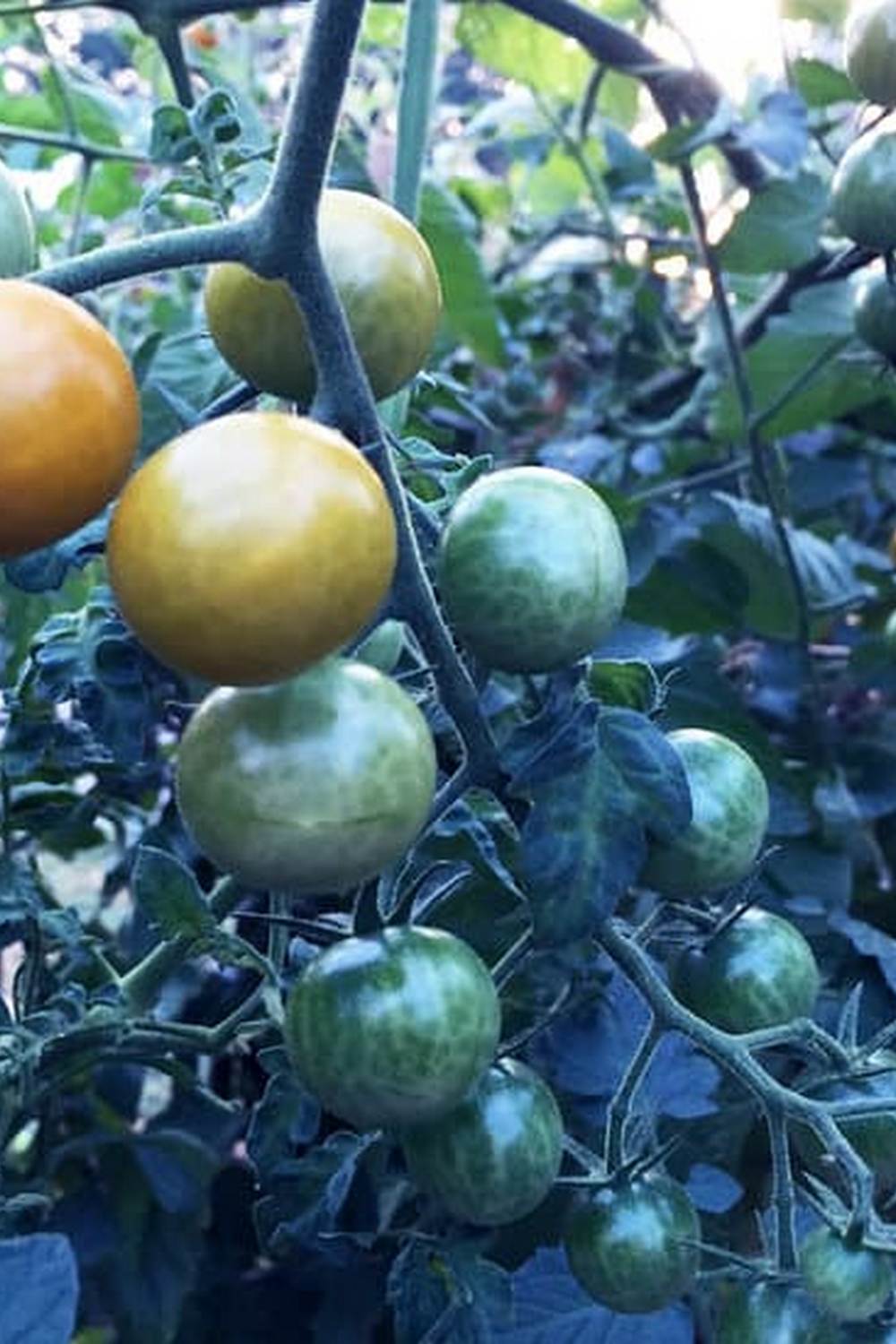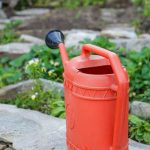Landscape fabric has been a topic of debate among gardeners, with the question often pondered: is landscape fabric good for vegetable gardens? Many garden enthusiasts swear by its benefits, while others remain skeptical. In this article, we will delve into the world of landscape fabric in vegetable gardens to uncover its advantages, drawbacks, installation process, maintenance tips, and more.
The use of landscape fabric in vegetable gardens can be a divisive topic as some believe it provides a multitude of benefits. Proponents argue that it helps suppress weeds, retain moisture in the soil, regulate temperature, and reduce the need for regular maintenance such as weeding. However, skeptics caution against potential downsides such as restricting root growth, promoting mold and mildew growth, and impeding beneficial organisms in the soil.
When considering using landscape fabric in your vegetable garden, it is essential to weigh both the benefits and drawbacks. By properly installing and maintaining the fabric, you can mitigate some of the potential issues while maximizing its advantages for your crops. Additionally, selecting the right type of landscape fabric for your specific needs and climate conditions is crucial in ensuring its effectiveness in your garden space.
Benefits of Using Landscape Fabric in Vegetable Gardens
Landscape fabric, also known as weed barrier or weed cloth, is a popular choice for many vegetable gardeners looking to control weeds and maintain a tidy garden bed. One of the main benefits of using landscape fabric in vegetable gardens is its ability to suppress weed growth effectively. By blocking out sunlight and preventing weeds from receiving essential nutrients, landscape fabric can significantly reduce the amount of time spent weeding, allowing gardeners to focus more on caring for their crops.
In addition to weed suppression, landscape fabric helps regulate soil temperature by insulating the soil beneath it. This can be particularly beneficial for vegetable crops that are sensitive to temperature fluctuations. By keeping the soil consistently warm during cooler seasons or cool during hot spells, landscape fabric provides a stable environment for optimal plant growth and production.
Furthermore, landscape fabric can help conserve moisture in the soil by reducing evaporation. This is especially crucial in vegetable gardens where maintaining adequate moisture levels is essential for healthy plant development. With less water loss through evaporation, gardeners can save time and resources on frequent watering while ensuring their vegetables receive consistent hydration throughout the growing season. Overall, the use of landscape fabric in vegetable gardens offers multiple benefits that can contribute to a successful and bountiful harvest.
Downsides of Using Landscape Fabric in Vegetable Gardens
When considering the use of landscape fabric in vegetable gardens, it’s important to weigh the downsides that come with this popular gardening tool. One of the main concerns is that landscape fabric can inhibit soil health and beneficial organisms from thriving in your garden. This can lead to a decrease in overall soil quality over time, which may impact the productivity and health of your vegetable plants.
Another downside of using landscape fabric in vegetable gardens is that it can be difficult to manage weeds that do eventually find their way through the fabric. Weeds may still take root in the layer of mulch placed on top of the fabric or through small tears and holes in the material. In this case, removing weeds becomes a more challenging task as they intertwine with the fabric, making it a tedious process to maintain a weed-free garden.
Additionally, some gardeners have experienced issues with water penetration when using landscape fabric in their vegetable gardens. Depending on the type of fabric used and how it is installed, water may struggle to reach plant roots effectively, leading to dry patches and potential water pooling in other areas. Proper irrigation methods must be implemented to ensure that moisture levels are maintained throughout the garden bed when using landscape fabric.
| Concerns | Impact |
|---|---|
| Inhibits soil health | Decreased soil quality, affecting plant growth |
| Weed management challenges | Tedious weed removal process intertwined with fabric |
| Water penetration issues | Potential dry patches and water pooling without proper irrigation |
How to Properly Install Landscape Fabric in a Vegetable Garden
Landscape fabric can be a useful tool in maintaining a vegetable garden, providing numerous benefits when installed correctly. Here are some steps to properly install landscape fabric in your vegetable garden:
- Prepare the soil: Before laying down landscape fabric, make sure to properly prepare the soil by removing any weeds, rocks, and debris. This will ensure a smooth surface for the fabric to be placed on.
- Cut and lay the fabric: Measure and cut the landscape fabric according to the size of your garden bed. Lay it down over the soil, ensuring that it covers the entire area where you want to control weeds.
- Secure the edges: Use landscape staples or pins to secure the edges of the fabric to prevent it from shifting or lifting up. Make sure that the fabric is taut and flat against the soil.
Proper installation of landscape fabric can help maintain a weed-free environment in your vegetable garden, allowing your plants to thrive without competition for nutrients and water. However, it is essential to consider some downsides before deciding if landscape fabric is suitable for your garden.
One downside of using landscape fabric in vegetable gardens is that it can also inhibit beneficial organisms like earthworms from accessing the soil. Additionally, if not properly maintained, weeds can still grow on top of or through the fabric, making it less effective over time. Therefore, regular inspection and maintenance are crucial for ensuring its effectiveness.
Overall, while landscape fabric can be a valuable tool in preventing weeds and preserving moisture in vegetable gardens, proper installation and maintenance are key factors in maximizing its benefits. By following these steps and being aware of potential drawbacks, you can determine if landscape fabric is a good choice for your specific gardening needs.
Choosing the Right Type of Landscape Fabric for Your Vegetable Garden
When it comes to choosing the right type of landscape fabric for your vegetable garden, there are a few key factors to consider. One of the most important things to look for is the permeability of the fabric. It is essential that water can still reach the soil beneath the fabric to ensure proper drainage and hydration for your plants. Opt for a landscape fabric with good moisture penetration to prevent water from pooling on top of the material.
Another crucial factor to consider when selecting landscape fabric for your vegetable garden is durability. Look for a fabric that is heavy-duty and will withstand regular wear and tear, as well as fluctuations in weather conditions. A durable landscape fabric will provide long-lasting weed control and protection for your vegetable garden beds.
Additionally, it is important to choose a landscape fabric that is environmentally friendly and safe for use in organic gardening practices. Avoid fabrics treated with harmful chemicals or materials that could leach into the soil and affect the health of your plants.
Opt for natural or biodegradable options that will break down over time without causing harm to your vegetable garden ecosystem. By carefully evaluating these factors, you can choose the best type of landscape fabric to support the growth and success of your vegetable garden while keeping it protected from weeds and pests.
Best Practices for Maintaining Landscape Fabric in Vegetable Gardens
Maintaining landscape fabric in vegetable gardens is essential to ensure its effectiveness in weed control and moisture retention. Here are some best practices to follow when maintaining landscape fabric in your vegetable garden:
- Regular Inspections: Periodically check the landscape fabric for any signs of wear, tears, or damage. Address any issues promptly to prevent weeds from penetrating the fabric.
- Proper Anchoring: Secure the edges of the landscape fabric with pins or staples to keep it in place. This will prevent shifting or exposure that can compromise its functionality.
- Cleaning: Remove any debris, dead leaves, or soil buildup on the surface of the landscape fabric regularly. This will prevent clogging and allow water to penetrate effectively.
In addition to these maintenance practices, it is important to consider the long-term care of landscape fabric in your vegetable garden. Proper care will not only extend the lifespan of the fabric but also contribute to a healthier garden overall.
- Weeding: While landscape fabric helps reduce weed growth, some weeds may still manage to grow on top of it. Regularly handpick these weeds or use a tool to remove them without damaging the fabric.
- Replacing Damaged Areas: If you notice significant damage to the landscape fabric, consider replacing that specific area rather than patching it up. This will ensure optimal performance and longevity.
- Monitoring Moisture Levels: Check the moisture levels under the landscape fabric periodically to ensure proper hydration for your vegetable plants. Adjust watering schedules accordingly based on your observations.
By following these best practices for maintaining landscape fabric in your vegetable garden, you can maximize its benefits and create a healthy growing environment for your crops. Remember that consistent upkeep is key to reaping the full advantages of using landscape fabric in your garden.
Alternative Methods to Landscape Fabric in Vegetable Gardens
Organic Mulch
One alternative method to using landscape fabric in vegetable gardens is opting for organic mulch. Organic mulch, such as straw, compost, or grass clippings, can provide similar benefits to landscape fabric when it comes to weed suppression and moisture retention. Unlike landscape fabric, organic mulch breaks down over time, enriching the soil with nutrients. It also allows for easier planting and maintenance compared to the use of landscape fabric.
Ground Covers
Another alternative to landscape fabric is utilizing ground covers like clover or creeping thyme in your vegetable garden. Ground covers not only suppress weeds and retain moisture but also add aesthetic appeal to your garden by providing a lush green carpet. These plants can be beneficial for attracting pollinators and beneficial insects to your garden, contributing to a healthier ecosystem overall.
No-Till Gardening
No-till gardening is another method that can replace the need for landscape fabric in vegetable gardens. By practicing no-till gardening techniques, you can reduce weed growth by leaving the soil undisturbed and covered with organic matter like compost or straw.
This approach promotes healthy soil structure and microbial activity while minimizing the need for additional weed control methods like landscape fabric. No-till gardening is an environmentally friendly option that can lead to improved soil fertility over time without the use of synthetic materials like landscape fabric.
Real-Life Examples of Vegetable Gardens Using Landscape Fabric
Example 1: Organic Vegetable Garden
In a small organic vegetable garden, landscape fabric played a crucial role in reducing weed growth and preserving soil moisture. By using a biodegradable landscape fabric, the gardeners were able to maintain their commitment to organic farming practices while still benefiting from the advantages of using landscape fabric. The fabric allowed for better control over where plants were placed and helped to create a more organized and visually appealing garden space.
Example 2: Large-Scale Vegetable Farm
On a large-scale vegetable farm, landscape fabric was used extensively to increase efficiency and reduce maintenance costs. By installing a durable and UV-resistant landscape fabric, the farm was able to suppress weeds effectively without the need for harmful chemical herbicides. The fabric also helped to regulate soil temperature, leading to healthier plant growth and increased yields. Overall, incorporating landscape fabric into their operations proved to be a cost-effective and sustainable solution for the farm.
Example 3: Community Garden Project
In a community garden project that aimed to make gardening accessible to all residents, landscape fabric was utilized to create raised beds for growing vegetables. This approach not only made gardening easier for individuals with limited mobility but also helped in preventing weeds from encroaching on the vegetable plots. The use of landscape fabric enabled the community members to focus on planting and harvesting rather than constant weeding, making the project more enjoyable and productive for everyone involved.
Conclusion
In conclusion, the use of landscape fabric in vegetable gardens can be a valuable tool, but it is important to weigh the pros and cons before deciding if it is the right choice for your garden. The benefits of landscape fabric include weed suppression, moisture retention, and temperature regulation. These factors can lead to healthier plants and higher yields in your vegetable garden.
However, there are also downsides to using landscape fabric in vegetable gardens. Some potential drawbacks include restricting root growth, creating a barrier for beneficial insects, and potential soil compaction issues. It is crucial to properly install and maintain landscape fabric in order to mitigate these disadvantages and maximize its benefits.
Ultimately, whether landscape fabric is the right choice for your vegetable garden depends on your specific gardening goals and preferences. Consider factors such as your desired level of maintenance, the types of crops you are growing, and your overall garden design.
Experimenting with alternative methods or finding a balance between landscape fabric and other practices may also be worth exploring. Always remember that what works best for one garden may not necessarily work for another, so it is essential to assess how landscape fabric fits into your unique gardening context.
Frequently Asked Questions
Should I Put Landscape Fabric in My Vegetable Garden?
The decision to use landscape fabric in your vegetable garden depends on your specific circumstances. While landscape fabric can help reduce weed growth, it may also hinder the natural decomposing process of organic matter in the soil.
Can You Use Landscape Fabric for Tomatoes?
Using landscape fabric for tomatoes can be a viable option, especially if you are looking to reduce weed growth around your tomato plants. However, it is important to ensure that the fabric allows for proper drainage and does not restrict root development.
Can Vegetable Roots Grow Through Landscape Fabric?
In general, vegetable roots have the ability to grow through landscape fabric if they encounter it in their path. However, the fabric may potentially hinder the natural growth and spread of roots by creating physical barriers. It’s essential to monitor plant health and root development when using landscape fabric in a vegetable garden.

If you’re looking to get into vegetable gardening, or are just looking for some tips on how to make your current garden better, then you’ve come to the right place! My name is Ethel and I have been gardening for years. In this blog, I’m going to share with you some of my best tips on how to create a successful vegetable garden.





